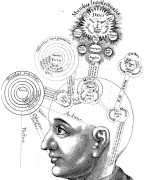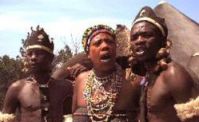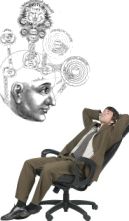Consciousness
"Consciousness is its content; the content of Consciousness is Consciousness". This simple non-obvious statement represents a direction to begin understanding Consciousness. Our self-identity, beliefs, thoughts, emotions and language are all included within the content of our Consciousness.
The idea that there is a separate Self outside our consciousness that has the ability to observe, analyse and modify our consciousness is a belief held by many religions and unfortunately within some academic psychology text. However, there is neither scientific evidence nor DNA that proves the existence of a Self that is separate from our consciousness.

The illusion of a separate Self outside our consciousness is simply a part within the content of Consciousness. Trying to understand our Consciousness is a paradox because the Self, acting as the observer is trying to observe itself. Observing our consciousness does not change who or what we are. However, understanding our consciousness enables us to take actions we may not have previously thought possible.
- Social harmony
- Ending of emotional suffering
- Being at one with the environment
These explanations are the modern views also expressed by many Physicists within the fields of quantum mechanics and relativity that include a neo Buddhist perspective directly influenced by the works of J Krishnamurti.
Computer analogy
A computer consists 3 parts.
1. Hardware is the circuit boards, hard drive, keyboard and screen.
2. Firmware is the operating system and programs.
3. Software is the information processing, data and memory etc.
A human consists of 3 parts.
1. Hardware is our physical body.
2. Firmware is our metabolism, blood flow and breathing.
3. Software is the information, communication, memory and thinking etc.
If we wrote a software replication of a computer and put that replication of itself into its hard-drive, how much space would be available for using the computer to do other things? The answer is, none. The whole computer would be full of a replication of itself and it would have no space available to do anything else. Therefore, why do we need a replication (as a Self image) of ourselves within our mind? No replication can be 100% accurate, what use is it, why is it there? We were not born with a replication of ourselves within our mind, as a Self-image. Where did it come from?
Fundamental question
The question of why a Self replication exists within our minds is the first step to understanding consciousness because, this asks the fundamental question of what is it that is doing the questioning and thinking. I can think of myself as being present in my mind. Is the replication doing the thinking, or is mind's capacity to think that gives rise to an illusion of a separate Self within the mind ?
Language and the human mind
Language evolved as a means of communicating reality between homo-sapiens in real time. The human mind is so sophisticated that unless there is external sensory input, the mind cannot discern the difference between a word in language and the thing it describes. One substitutes the other. Human language represents a model of reality, described as a meta-model (a model of a model). Listening to someone telling a story, or the radio, or reading a book, clearly reveals this phenomenon. This is also the reason dreams can sometimes appear to be real.
The mind is the human brain's capacity to manifest a complex language representation of reality. The word mind is a metaphor representing this process. The word spirit was a similar term used in earlier times. Young people, studying psychology, often misunderstand single word metaphors that are not correctly explained in academic text or by tutors. Grammatically the word mind is a verb "Will you please mind the baby". The use of the word mind as a metaphor (without explanation) leads to the word mind being misunderstood as a noun or object.
The ability to mechanically speak appears to exist in a single location within the brain but, the capacity for the brain to construct and retain a reality through language appears to be spread throughout the brain. Neuro-science is constantly un-ravelling this puzzle.
This enables humans to communicate detailed information of agreed reality through their primary sensory systems, sound (speech and music), sight (writing and visual art), touch including Braille. The visual and tactile senses are utilised for developing language if a child is born deaf. Language can be derived through any of the primary senses. During infancy, the human brain needs sensory input and language (similar to food) for the mind to develop.
Many who study animal behaviour realise that animals evolved as a function of their environment and therefore are unable to see themselves (as individuals) being separate from it. No animal, insect or micro organism evolved a mind that could independently create a model of its environment or existence. A bee hive clearly displays this phonomon.
Homo-sapiens evolved a psychology with opposing digits and a brain that creates a separate linguistic meta model of its environment, culture and self awareness. This unique ability enables humans to occupy and transform almost any environment it chooses to its purpose.
Exponential expansion
As the mind grows on language and sensory information the more the mind expands to accept new language and sensory information. This process of the mind to keep expanding on language and sensory information appears to be almost infinite. The minds capacity to exponentially expand to acept more language and sensory information appears to be only limited by the linguistic culture and sensory input available to the developing child. However, after the first 14 years of life, this exponential expansion of the mind appears to gradually reduce to linear expansion during adulthood and eventually zero expansion toward the end of life.
wikipedia.org Exponential growth
Reflection
As stated earlier, the human mind is so sophisticated that unless there is external sensory input, the mind cannot discern the difference between a word in language and the thing it describes; therefore, language if a reflection of reality. This action of reflection (language representing reality) gives the human mind the experience of a Self existence. "I think therefore I am"
There is no external intention of a God (or any other entity) for the mind to create a Self-image. The Self-image is simply the result of the mind's capacity to evolve a phenomenon where language reflects reality. The Self-concept as 'I' is the reflected by-product of this phenomenon. Theory of mind is also a term used to represent this result.
An ironic Biblical reference to the concept of language being synonymous with God, has been debated over the centuries for its interpretive meaning. The Biblical idea that humans were created in God's image and that language is what makes us human presupposes that language defines who and what we are. "I am my word and my word is me". The Gospel According To Saint John
1. In the beginning was the Word, and the Word was with God, and the Word was God.
Language deprivation experiments
 Throughout history many cruel and sadistic
Language deprivation experiments
were conducted on infants and children. The results were conclusive.
1. Without sensory input and language the mind fails to develop and the infant perishes.
2. A child who has learnt language and is later isolated and deprived of sensory input, results in the child's mind (over time) loosing the capacity to discern between external and internal reality and the mind disintegrates into chaos. The child eventually perishes.
Pic. Thieves of innocence
Throughout history many cruel and sadistic
Language deprivation experiments
were conducted on infants and children. The results were conclusive.
1. Without sensory input and language the mind fails to develop and the infant perishes.
2. A child who has learnt language and is later isolated and deprived of sensory input, results in the child's mind (over time) loosing the capacity to discern between external and internal reality and the mind disintegrates into chaos. The child eventually perishes.
Pic. Thieves of innocence
Human language and therefore consciousness of a Self-existence does not evolve nor can it be effectively sustained within an isolated individual. Language and consciousness is a collective phenomenon of a species sustaining an evolutionary culture. Observing a bee hive also reveals this, without the need to do cruel experiments.
Self image

From the moment a child is born, parents and others tell it what it is, giving it a name and describing it as a gender. The child's mind will expand on any information detected by its senses regardless of its source. Then there is information as conditioning through indoctrination (education) for the child's mind to be moulded (imprinted) into a function of society. The study of child development shows that from the age 4 the mind has sufficient language capacity to randomly and systematically create complex cross associations of reality (as imagination) forming new structures of information for the mind to expand upon.
This process includes anything seen on TV, films and fairy tales plus internally re-arranging language information that is already within the mind. A pink elephant with ducks feet flying around the moon, or imagine chopping one's siblings into little bits and feeding the bits to the cat. There is no DNA for morality that limits associations the mind will randomly create to expand on.
Compassion
Compassion is often described as a unique human attribute. The ability of a human mind to evolve a language perception of its existence, combined with unlimited variations of itself as Superman flying over tall buildings or Cinderella, automatically enables a perception of oneness with all human minds. Words describing this are Compassion, love, empathy, responsibility etc.
A Self-concept is fully formed at approx 7 years. From this approximate age the Self-image as 'I' can begin to behave as an independent reality taking over the role of further social conditioning and building upon the Self-image, hereby expanding itself. The size of the mind's Self concept as 'I' is balanced by the mind's perception of oneness with other human minds.

Humans evolved in small numbers of intimate groups. The capacity for a single mind to create a Self-concept as 'I' that was separate from the tribe's collective identity, would be almost impossible. Survival dictated that the senses and minds of indigenous people be finely tuned to the environment. The detail of linguistic information representing the natural environment of plants, animals and weather including a highly developed visual, auditory and olfactory alertness plus attention to relationships with each other was almost infinitely greater than modern humans living in noisy polluted cities. The minds of indigenous people living before modern civilisation evolved, contained a miniscule Self image as 'I', in comparison to the inflated Self image of today's mind.
Problems of self-image
Mass media and marketing of instant gratification coupled with modern education techniques of PMA (positive mental attitude) and positive Self image "Whatever the mind can conceive and believe the mind can achieve" has resulted in collectively forming a cultural Self image that individuals identify with, creating a positive feedback loop exponentially expanding the Self image.
There is nothing to stop the Self-image as 'I' expanding forever, building upon itself occupying valuable space within the mind, reducing the minds ability to accept new information from the outside world. The global economic system of capitalism (as selfism) demonstrates this. One possible resolution to this problem is that environmental degeneration may cause the human population to crash.
As a generalisation, the average person in large cities is directly related to only a small hand-full of people. Media becomes the intermediary for each person's knowing of larger numbers of people and the environment. Therefore, in large cities, the majority of people have a media identity of who they are. Other people and the environment are seen as being separate from themselves; therefore there is nothing to limit bearing influence upon and exploiting others including the environment.
Throughout history, philosophers have warned about the connection between un-earned wealth and power, excessive Self image (Kings, Queens, Presidents and Popes) and the capacity for un-limited cruelty and cowardice.
Indigenous cultures from where we evolved were similar to small country towns. The average person's identity is directly related to a larger number of people as an extended family (the tribe) including the environment. Other people including the environment are seen as being part of them, which automatically limits bearing influence upon and exploiting others including the environment.
I am the ...
With a large percentage of sensory input and language limited to one way (simplex) communication as with TV, radio, internet, computer games, newspapers, books, parents, teachers and within ourselves as if we are talking to another part of ourselves within our mind, problems can and do arise.

The 'I' as the Self-image is a language construction made up of beliefs, memories and projections of Self-importance. The 'I' formulates a positive or negative mental attitude of itself. I know it all, because 'I' am the Dictator, Doctor, Accountant, President, Pope etc. The 'I' as the Self-image can become so large that it begins to behave a separate entity (an individual) that has a unique consciousness separate from other human beings. Many people state they feel separate or isolated in their mind. The 'I' now believes it can bare influence upon the mind that created it, including others (positive or negative). Behaving as a Napoleon, Hitler or a Gandhi.
A large activity of popular psychology is believing that the 'I' Self-image should be expanded and modified by describing and thinking of itself as being expanded and modified, without questioning what it is that is doing the thinking and expanding.
The larger the Self image the less attentive the mind is to accepting new information from the outside world. The more alert the mind is to accepting new information from the outside world the less pre-occoupied the mind is with expanding its Self-image. Most animals are not capable of formulating a Self image and remain close to 100% alert to obtain food or avoid being eaten.
The ability to smell a flower, observe the beauty of a sunrise or sunset, ponder upon the stars, the touch of a hand, the kindness of a face, become reduced (or lost) when the 'I' as the Self-image assumes the primary identity of who and what we are. This delusion of an excessively inflated Self-image becoming our primary identity should be questioned as being the primary cause of many, if not all psychological disorders (except for genetic or chemical imbalance).
The thinker and the thought

The following 2 paragraphs are a paraphrase of a humorous conversation between the physicist David Bohm and J Krishnamurti.
"Thinking invents a corporation separate from itself responsible for thinking, named 'Thinking Incorporated', which is myself. Thought then believes that the 'I' Self-image is a reality independent of thought similar to a building. Then thought which has created the 'I' as an independent reality does not take responsibility for what it has done and is continuing to do.
The feeling that 'I' am real because I think goes like this, "I have a problem .... and my problem is .... I am suffering." I am thinking of my suffering which implies that I am there thinking. The suffering is real because 'I' am real. Then comes the next thought, "because my suffering is real .... 'I' must think some more." I am compelled to keep on thinking as a means to maintain myself in existence and continue suffering. To stop thinking will stop the suffering but, 'I' as the Self-image will cease to exist." Hmmm what an amusing dilemma! Can thought see itself, know its place and not project itself?
Self conflict
 How often do we find ourselves in conflict without understanding why? In a flash the silliness of it may appear. In that moment we are still, the mind completely quiet. A second later we may fall back into that conflict. However, there is also the odd time when we don't fall back into the conflict, but start laughing. Compassion enters when we see the other person we love, psychologically isolated within a spiralling obsession of themselves, in distress, unable to reach them.
Pic. Elizabeth Taylor - Who's Afraid of Virginia Woolf?
How often do we find ourselves in conflict without understanding why? In a flash the silliness of it may appear. In that moment we are still, the mind completely quiet. A second later we may fall back into that conflict. However, there is also the odd time when we don't fall back into the conflict, but start laughing. Compassion enters when we see the other person we love, psychologically isolated within a spiralling obsession of themselves, in distress, unable to reach them.
Pic. Elizabeth Taylor - Who's Afraid of Virginia Woolf?
Observing consciousness is a paradox because the observed acting as the observer is trying to observe itself. The closest we can achieve to observing our consciousness is by being completely silent without any action of thought as the 'I'. First we have to overcome the illusion that thought is the source of consciousness.
We have been taught to believe that 'I' exist because 'I' think (I think therefore I am) However, thought as 'I' is an expression of memory (the past) and therefore is only a small part of the content of consciousness and not the whole of consciousness. Using thought as a means to observe consciousness is limited only to analysis. Thought acting as the past trying to observe itself in the present can find itself in a contradiction. "Analysis becoming paralysis." 'Observation' (as insight) can only happen when thought is still.
If this is the first time you have read something like this, it may be difficult to understand. Stop for a moment. In your own time read it again, slowly reading the words aloud in your head. You may need to repeat this 3 or 4 times. Each time it will make more sense and appear logical, as though you had always understood it, but did not know it could be described.
Existence of Consciousness
Our experience of human existence is by circumstance. We did not choose to be born, nor do we choose to die. All biological organisms are self replicating, evolving with the environment. Our existence is an expression of the evolving universe and therefore we metaphorically serve its function or purpose. We may not know from which evolutionary line (missing link) we evolved, however we can observe the result.
Another common belief (without proof) also within many religions and popular psychology is that after we die the content of our Consciousness separates from our physical mind and continues forever. This belief that our Consciousness continues forever after our physical death presupposes many questions. After we die would we have a knowing our life was taken from us? What specific content of our Consciousness has purpose beyond our physical form?
- Our name?
- Our beliefs?
- Our sexual identity?
- Our sensory perception?
- Our mobile number or email address?
This sample list demonstrates that the content of Consciousness ends (empties) when our physical form returns to dust.
River of Consciousness
 The content of Consciousness resides within all living beings and flows like a river, from one human organism to another, generation after generation, gathering and acuminating content. (The earth is round and not flat as previously believed etc). In humorous terms, Consciousness is similar to a virus in which the human organism serves as its host. Providing human organisms continue to self-replicate, Consciousness continues. If the human organism ceases to exist, Consciousness ceases to exist. Therefore, be kind to the planet, it is the only one we have to live on at present.
The content of Consciousness resides within all living beings and flows like a river, from one human organism to another, generation after generation, gathering and acuminating content. (The earth is round and not flat as previously believed etc). In humorous terms, Consciousness is similar to a virus in which the human organism serves as its host. Providing human organisms continue to self-replicate, Consciousness continues. If the human organism ceases to exist, Consciousness ceases to exist. Therefore, be kind to the planet, it is the only one we have to live on at present.
This page is an abridged summary of the dialogues, workshops and seminars given by the author John Lenard Burnett. Bookings for workshops and seminars is on the Programs page.
Links
wikipedia.org Consciousnesswikipedia.org Theory of mind
wikipedia.org Perception
wikipedia.org Philosophy of perception
wikipedia.org Cognitive psychology
wikipedia.org Cognitive science
wikipedia.org Psychophysics
wikipedia.org Arthur Schopenhauer
wikipedia.org Wilhelm_Wundt
Some Institutes studies of consciousness
Max Planck Institute
Massachusetts Institute of Technology
Koch Laboratory
Institute of Neuroinformatics
Indiana University Cognitive Science Program
Ohio State University Language Perception Laboratory
ANU Centre for Consciousness
University of Tasmania Theory of mind (PDF)